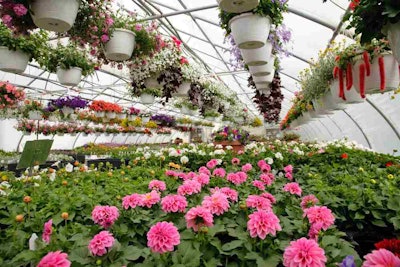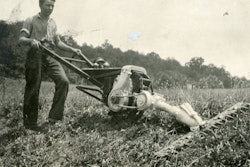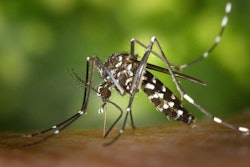 According to Senior Vice President of AmericanHort Craig Regelbrugge, “virtually every nursery and greenhouse operation that hires labor beyond the family, and uses pesticides in the production of plants, will be affected.”
According to Senior Vice President of AmericanHort Craig Regelbrugge, “virtually every nursery and greenhouse operation that hires labor beyond the family, and uses pesticides in the production of plants, will be affected.”For plant suppliers and nurseries, it’s not too early to begin preparing for compliance with new Pesticide Worker Protection Standards (WPS) approved by the U.S. Environmental Protection Agency.
Although EPA approved the change last year and made it effective Jan. 1, 2016, full compliance with most of the new rules is not required until Jan. 2, 2017 – some even later. The agency says the revised rules will strengthen training, notification, pesticide safety and hazard communication information.
According to the executive summary, the EPA’s revisions were made in an effort to “reduce occupational pesticide exposure and incidents of related illness among agricultural workers and pesticide handlers covered by the rule and to protect bystanders and others from exposure to agricultural pesticide use.”
Aside from the obvious agriculture workers, the WPS rules apply to pesticide applicators and pesticide trainers and companies that grow and harvest plants commercially, such as nurseries, greenhouses, Christmas tree and floriculture growers.
Organizations representing many of those groups took exception to EPA’s proposed revision of the rules. Before the changes went into effect, AmericanHort, the Society of American Florists, the National Christmas Tree Association, and the California Cut Flower Commission said in a joint statement “the proposal would place new burdens on horticultural operations, and these regulatory burdens will not for the most part improve worker safety.”
Changes to training requirements are probably the most controversial revisions to the previous standards. Pesticide handlers now have to be trained every year instead of every five years.
In addition, a five-day grace period for training has been eliminated. Workers must now be trained before they can work in an area where pesticide has been used or where a so-called “restricted-entry interval,” or REI, has been in effect at any time during the past 30 days.
The training has been expanded from 13 items to 36 items for handlers. Along with this broadened instruction, employers are expected to keep training records for workers and handlers for two years and provide a copy of said records upon request. Previously, no recordkeeping was required.
The trade associations argued that the training interval and content should take account of workers’ duties, experience and previous training.
“An annual refresher training course coupled with occasional in-depth retraining should be adequate for experienced workers,” the group wrote in a letter to EPA. “New workers should receive in-depth training.”
Pesticide handlers and early entry workers now have to be at least 18 years old, unless they are an immediate family member of the owner of the commercial operation that is applying the pesticide. The new rule expands the definition of “immediate family” to include in-laws, aunts, uncles, nieces, nephews, first cousins, grandparents and grandchildren.
The rule also increases the amount of decontamination supplies that must be on hand during pesticide applications. Employers must provide 1 gallon of water per worker and 3 gallons for each handler and early entry worker. EPA requires that the water be measured at the beginning of the work period.
Employers must provide a system for handlers who need to flush their eyes that can distribute 0.4 gallons per minute for 15 minutes or 6 gallons of water able to flow gently for 15 minutes.
“While we appreciate the challenge EPA is attempting to address, we are struggling with numerous inherent challenges,” wrote AmericanHort and the allied groups. “If the water is supplied by a well or municipal source, how do you determine the flow rate or capacity in order to comply?”
For the full list of amendments to the rules and a comparison with the previous requirements, click here.
While compliance with most of the rules is mandatory by Jan. 2, 2017, some will not be fully in effect until Jan. 1, 2018 – and possibly even later if the EPA fails to make training materials available by July 1, 2017.











